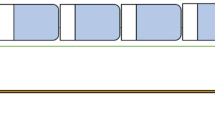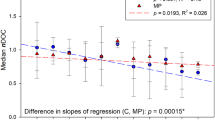Abstract
Oceanographic studies revealed the abundance of minute plastic particles in coastal regions. Such particles, called microplastics, are abundant in sizes smaller than 100 µm ESD (Equivalent Spherical Diameter) and can be collected and ingested by planktonic copepods. Those animals are the most abundant metazoans on our planet. Abundantly co-occurring with planktonic copepods in subtropical and temperate neritic waters are doliolids (Tunicata, Thaliacea), which can dominate subtropical shelves because of their high asexual reproductive performance. Our studies were designed to examine the effects of polystyrene beads at low abundance, compared with phytoplankton, on abundantly occurring gonozooids of Dolioletta gegenbauri. Our findings reveal that such abundance of microplastic particles, in the presence of environmental concentrations of phytoplankton, reduces rates of feeding, growth, and oxygen consumption of this tunicate. Feeding rates on phytoplankton in the presence of beads were reduced by up to 58%, growth rates by up to 85%, and oxygen consumption rates by up to 33%. We conclude that such microplastic particles could limit the often in situ encountered pronounced proliferation of this tunicate species (Deibel in: Bone (ed) The biology of pelagic tunicates, Oxford University Press, Oxford, 1998).








Similar content being viewed by others
References
Andrady AL (2011) Microplastics in the marine environment. Mar Poll Bull 62:1596–1605
Arthur C, Baker J, Bamford H (eds) (2009) Proceedings of the international research workshop on the occurrence, effects, and fate of microplastic marine Debris. NOAA Technical Memorandum, NOS-OR & R-30. NOAA, Silver Spring, Sept. 9–11, 2008, 530
Ayukai T (1987) Discriminate feeding of the calanoid copepod Acartia clausi in mixtures of phytoplankton and inert particles. Mar Biol 94:579–587
Cole M, Lindeque P, Fileman E, Halsband C, Goodhead R, Moger J, Galloway TS (2013) Microplastic ingestion by zooplankton. Environ Sci Technol 47:6646–6655
Cole M, Lindeque P, Fileman E, Halsband C, Galloway TS (2015) The impact of polystyrene microplastics on feeding, function and fecundity in the marine copepod Calanus helgolandicus. Environ Sci Technol 49:1130–1137
Cozar A, Echevarria F, Gonzalez-Gordillo I, Irigoien X, Ubeda B, Hernandez-Leon S, Palma AT, Navarro S, Garcia-de-Lomas J, Ruiz A, Fernandez-de-Puelles ML, Duarte CM (2014) Plastic debris in the open ocean. Proc Nat Acad Sci 111:10239–10244
Deevey GB (1952) Quantity and composition of the zooplankton of Block Island Sound, 1949. Bull Bingham Oceanogr Coll 13:120–164
Deibel D (1985) Blooms of the pelagic tunicate, Dolioletta gegenbauri: Are they associated with Gulf Stream frontal eddies? J Mar Res 43:211–236
Deibel D (1998) The abundance, distribution, and ecological impact of doliolids. In: Bone Q (ed) The biology of pelagic tunicates. Oxford University Press, Oxford, pp 171–186
Deibel D, Paffenhöfer G-A (2009) Predictability of patches of neritic salps and doliolids (Tunicata, Thaliacea). J Plankton Res 31:1571–1579
Di Mauro R, Kupchik MJ, Benfield MC (2017) Abundant plankton-sized microplastic particles in shelf waters of the northern Gulf of Mexico. Environ Pollut 230:798–809
Fernandez F (1979) Particle selection in the nauplius of Calanus pacificus. J Plankton Res 1:313–327
Foley CJ, Feiner CS, Malinich TD, Höök TO (2018) A meta-analysis of the effects of exposure to microplastics on fish and aquatic invertebrates. Sci Total Environ 631–632:550–559
Frost BW (1972) Effects of size and concentration of food particles on the feeding behavior of the marine planktonic copepod Calanus pacificus. Limnol Oceanogr 17:805–815
Fryer G (1986) Structure, function and behavior and the elucidation of evolution in copepods and other crustaceans. Syllogeus 58:150–157
Gibson DM, Paffenhöfer G-A (2000) Feeding and growth rates of the doliolid, Dolioletta gegenbauri Uljanin (Tunicata, Thaliacea). J Plankton Res 22:1485–1500
Gregory MR, Andrady AL (2003) Plastics in the marine environment. In: Andrady AL (ed) Plastics and the environment. Wiley, New York, pp 379–401
Huntley ME, Barthel K-G, Star JL (1983) Particle rejection by Calanus pacificus: discrimination between similarly sized particles. Mar Biol 74:151–160
Jørgensen CB (1966) Biology of suspension feeding. Pergamon Press, Oxford, p 357
Kautsky H (1939) Quenching of luminescence by oxygen. Trans Faraday Soc 35:216–219
Köster M, Krause C, Paffenhöfer G-A (2008) Time-series measurements of oxygen consumption of copepod nauplii. Mar Ecol Prog Ser 353:157–164
Köster M, Paffenhöfer G-A, Baker CV, Williams JE (2010) Oxygen consumption of doliolids (Tunicata, Thaliacea). J Plankton Res 32:171–180
Lenz R, Enders K, Nielsen T (2016) Microplastic exposure studies should be environmentally realistic. Proc Nat Acad Sci 113:4121–4122
Nakamura Y (1998) Blooms of tunicates Oikopleura spp. and Dolioletta gegenbauri in the Seto Inland Sea, Japan, during summer. Hydrobiol 385:183–192
Paffenhöfer G-A (1970) Cultivation of Calanus helgolandicus under controlled conditions. Helgoländer wiss Meeresunters 20:346–359
Paffenhöfer G-A, Gibson DM (1999) Determination of generation time and asexual fecundity of doliolids (Tunicata, Thaliacea). J Plankton Res 21:1183–1189
Paffenhöfer G-A, Lee TN (1987) Development and persistence of patches of Thaliacea. S Afr J Mar Sci 5:305–318
Paffenhöfer G-A, Lewis KD (1990) Perceptive performance and feeding behavior of calanoid copepods. J Plankton Res 12:933–946
Paffenhöfer G-A, Van Sant KB (1985) The feeding response of a marine planktonic copepod to quantity and quality of particles. Mar Ecol Prog Ser 27:55–65
Paffenhöfer G-A, Strickler JR, Alcaraz M (1982) Suspension-feeding by herbivorous calanoid copepods: a cinematographic study. Mar Biol 57:193–199
Paffenhöfer G-A, Sherman BK, Lee TN (1987) Summer upwelling on the southeastern continental shelf of the U.S.A. during 1981. Distribution and abundance of particulate matter. Prog Oceanogr 19:373–401
Paffenhöfer G-A, Atkinson LP, Lee TN, Verity PG, Bulluck LR III (1995) Distribution and abundance of thaliaceans and copepods off the southeastern U.S.A. during winter. Cont Shelf Res 15:255–280
Takahashi K, Ichikawa T, Fukugama C, Yamane M, Kakehi S, Okazaki Y, Kubota H, Furuya K (2015) In situ observations of a doliolid bloom in a warm water filament using a video plankton recorder: bloom development, fate, and effect on biogeochemical cycles and planktonic food webs. Limnol Oceanogr 60:1763–1780
Tebeau CM, Madin LP (1994) Grazing rates for three life history stages of the doliolid Dolioletta gegenbauri Uljanin (Tunicata, Thaliacea). J Plankton Res 16:1075–1081
Vroom RJE, Koelmans AA, Besseling E, Halsband C (2017) Aging of microplastics promotes their ingestion by marine zooplankton. Environ Pollut 231:987–996
Zar JH (1974) Biostatistical analysis. Prentice-Hall, Inc., Englewood Cliffs, p 620
Acknowledgements
The authors express gratitude to the captain Raymond Sweatte and crew of the R/V Savannah for supporting professionally our efforts to obtain doliolids and copepods during various times during the past years on the southeastern shelf of the United States.
Author information
Authors and Affiliations
Corresponding author
Rights and permissions
About this article
Cite this article
Paffenhöfer, GA., Köster, M. The Effects of Microplastics on Dolioletta gegenbauri (Tunicata, Thaliacea). Arch Environ Contam Toxicol 78, 94–105 (2020). https://doi.org/10.1007/s00244-019-00676-z
Received:
Accepted:
Published:
Issue Date:
DOI: https://doi.org/10.1007/s00244-019-00676-z




